Table of Contents
Famous Temples in India
In our Constitution of India, India is described as a SOVEREIGN SOCIALIST, SECULAR, DEMOCRATIC, REPUBLIC country. We live in the land of secularism where People from different religions and beliefs live in harmony and brotherhood.
According to the history of human civilization, India is one of the oldest civilizations in the world. India is a land of beliefs, Rich cultures, and also the birthplace of different religions and traditions. Such as Hinduism, Jainism, Buddhism and Sikhism. The oldest religion in the world, according to theory, is Hinduism. Hinduism, unlike other religions, has no creator and was created through the fusion of several traditions. According to numerous historical writings and academics, religion is a customary way of life with no clear beginning or end.
In Hinduism, There is a belief that the residence of the Almighty is in a “Mandir” or “Temple” Where people of Hindu religions use to go there for worship and Prayer. On this belief king of Ancient India built a lot of temples with magnificent works all over India. In India, you will find magnificent temples in almost every corner of India. There are various histories or better you can say it mysteries surrounding almost every temple.
India is known as ‘Sone ki chiriya ‘. If we turn the history page, Various foreigners came to India and several times attacked and looted the temples. Despite these attacks India and its temples never bent down, It shines as before. This page is getting short if we are going to cover all the temples located in India. The top 20 temples which are visited by Trousists are introduced here. We believe this blog will refresh your mind.
Top 20 Famous Temples in India List
The Famous Temples in India list is given below.
| Temple Name | Location |
| Kedarnath Temple | Rudraprayag, Uttarakhand |
| Somnath Temple | Somnath Gujarat |
| Vaishno Devi Temple | Katra, Jammu and Kashmir |
| Ramanathaswamy Temple | Rameshwaram, Tamil Nadu |
| Kashi Vishwanath Temple | Varanasi, Uttar Pradesh |
| Konarak Sun Temple | Konark, Odisha |
| Shri Jagannath Temple | Puri, Odisha |
| Yamunotri Temple | Uttarkashi, Uttarakhand |
| Meenakshi Temple | Madurai, Tamil Nadu |
| Amarnath Cave Temple | Jammu and Kashmir |
| Lingaraja Temple | Bhubaneswar, Odisha |
| Tirupati Balaji Temple | Tirumala, Andhra Pradesh |
| Kanchipuram Temples | Kanchipuram, Tamil Nadu |
| Ranakpur Temple | Pali, Rajasthan |
| Shirdi Sai Baba Temple | Shirdi, Maharashtra |
| Shri Padmanabhaswamy Temple | Trivandrum, Kerala |
| Dwarkadhish Temple | Dwarka, Gujarat |
| Laxminarayan Temple | Delhi |
| Siddhivinayak Temple | Mumbai, Maharashtra |
| Gangotri Temple | Uttarkashi, Uttarakhand |
| Iskcon Temple | Vrindavan, Uttar Pradesh |
| Mahabodhi Temple | Gaya, Bihar |
| Kamakhya Temple | Guwahati, Assam |
| Khajuraho Temple | Khajuraho, Madhya Pradesh |
| Virupaksha Temple | Hampi, Karnataka |
| Akshardham Temple | Delhi |
| Shri Digambar Jain Lal Mandir | Delhi |
| Sanchi Stupa | Sanchi, Madhya Pradesh |
| Golden Temple | Amritsar, Punjab |
Top 10 Famous Temples in India
First Temple: Somnath Temple, Gujarat
Somnath Temple is one of the most well-known pilgrimage destinations. Ancient literature including the Rigveda, the Shivpuran, and the Shreemad Bhagavat all mention this temple. This temple is situated on Gujarat’s western coast. Shree Somnath Jyotirling Temple is highly
revered by followers of Lord Shiva since it is thought to include one of the 12 Jyotirlingas, sacred sites in India thought to be the sites of Lord Shiva’s manifestation.
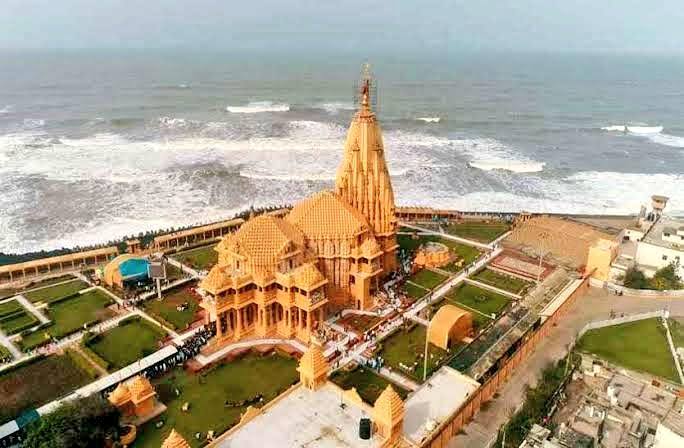
Second Temple: Shri Kashi Vishwanath Temple, Varanasi
The name Vishvanatha or VishveshvaraKashi, which refers to Lord Shiva, signifies Ruler of the Universe. One of the most well-known Hindu temples devoted to Lord Shiva is the Vishvanath Temple. One of the 12 Jyotirlinga temples is located here. It is situated in Varanasi, India’s Uttar Pradesh. On the western bank of the revered Ganga is where the temple is located.
Numerous Muslim emperors had destroyed this sacred Shiva temple before, most recently Aurangzeb, the sixth Mughal emperor. The Maratha ruler Ahilyabai Holkar of Indore erected the existing building in a nearby location around 1780. Recently Government of Uttar Pradesh along with the Government of India renovate the temple with a new look.

Third Temple: Tirupati Balaji Temple, Andhra Pradesh
Tirupati Balaji Temple also known as Sri Venkateswara Swami Vaari Temple is one of the most famous places for Hindu devotees. In the Indian state of Andhra Pradesh’s Tirupati district, in the hill town of Tirumala, sits the Sri Venkateswara Swami Vaari Temple, is located. The temple is devoted to Venkateswara, a manifestation of Vishnu. As per belief, Lord Vishnu is thought to have come to earth to deliver humanity from the hardships and sufferings of the Kali Yuga.

Forth Temple: Sree Padmanabhaswamy Temple, Kerala
As per the belief of Hindu Devotees, the Sree Padmanabhaswamy temple has been around for 5000 years. Sree Padmanabhaswamy Temple is situated in Thiruvananthapuram in the state of Kerala. This temple is one of the 108 Divya Desams.
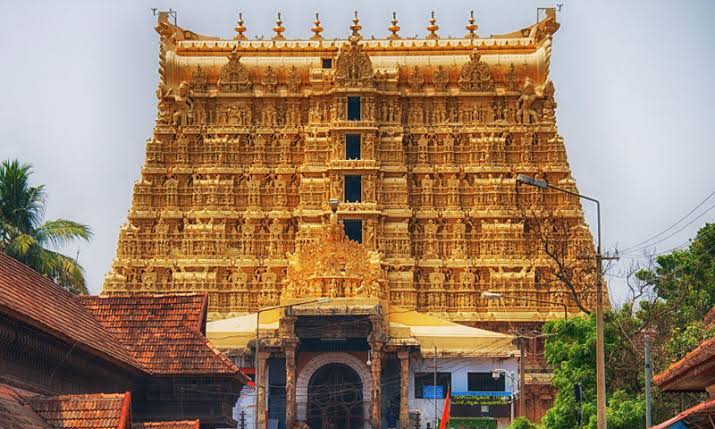
The Padmanabhaswamy Temple is dedicated to Lord Padmanabha, one of the avatars of Lord Vishnu is one of the main locations for Vaishnava devotion according to Vaishnavism’s dharma. There is a reference to the Padmanabhaswamy Temple in The Bhagwad Gita.

Fifth Temple: Shri Jagannath Temple, Puri
Odisha, The land of Lord Jagannath. Odisha’s Puri is where the Jagannath Temple is situated. One of the Char Dham pilgrimage destinations is the Puri Jaganath Temple. The three main deities are dragged on enormous, ornately decorated temple vehicles, during the annual Ratha Yatra event at the Puri temple.
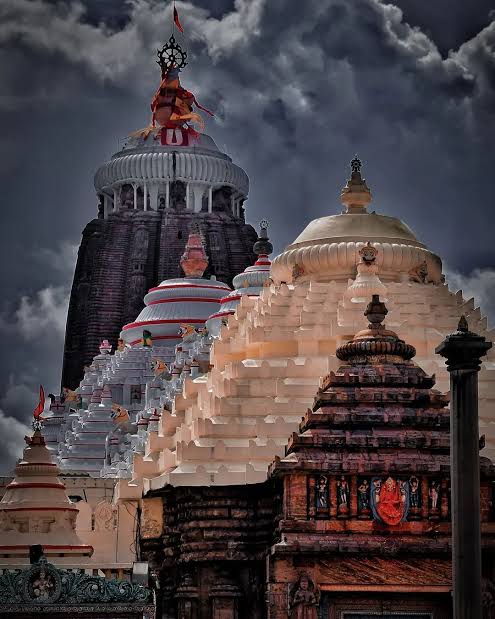
Sixth Temple: The Dwarkadhish temple
Dwarka, the capital of Lord Krishna. The Dawarladish temple, also known as Jagat Mandir is located in the Gujarati city of Dwarka. Also a stop on the Char Dham pilgrimage, this Hindu temple. devoted to Krishna, who is venerated here as the “King of Dwarka,” or Dwarkadhish. Jagat Mandir or Nija Mandir is the name of the five-story building’s main shrine, which is supported by 72 pillars. Archaeological discoveries indicate that the initial temple was most likely constructed 2,200 years ago.
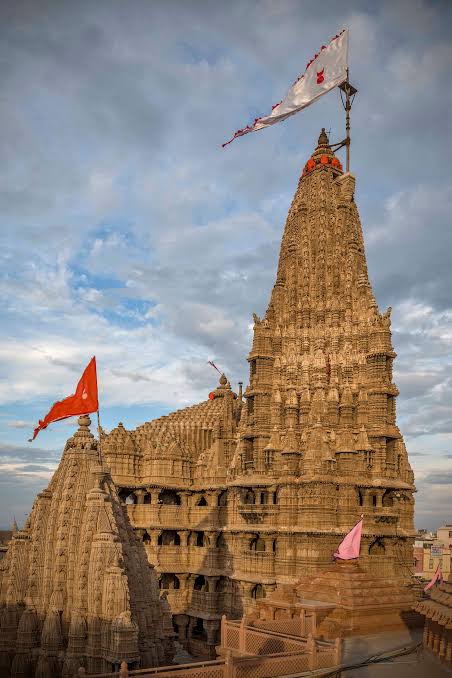
Seventh Temple: Amarnath Cave Temple
In the Indian state of Jammu and Kashmir’s Anantnag area, there is a Hindu sanctuary known as Amarnath Temple. The Shiva Lingam at the shrine in this temple is a Swayambhu lingam. The cave is located in Lidder Valley and is 3,888 metres above sea level, 168 kilometres from the city of Anantnag. It is mostly covered in snow throughout the year, with the exception of a brief period in the summer when it is open to pilgrims. The cave is surrounded by glaciers and snowy mountains.

Eighth Temple: Kedarnath Temple
The Kedarnath Temple is located in the town of Kedarnath in the Indian state of Uttarakhand’s Rudraprayag district. Lord Shiva is honoured in this temple. One of the earliest mentions of Kedarnath is found in the Skanda Purana, which identifies Kedara (Kedarnath) as the spot where Lord Shiva discharged the Ganges River’s sacred waters from his matted hair.
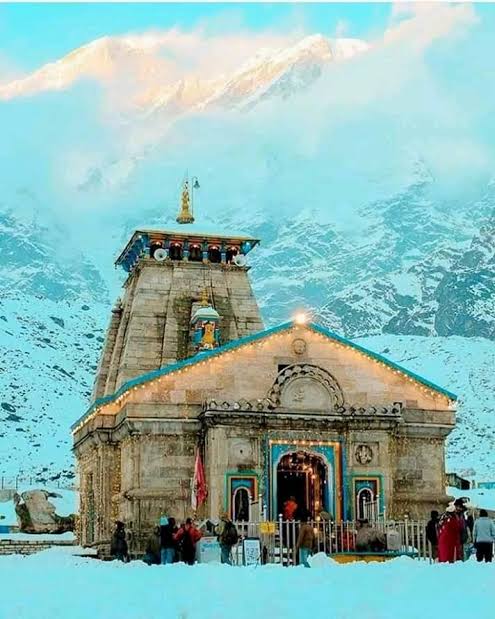
Ninth Temple: Badrinath Temple
Badrinath Temple is one of the destinations of char Dham jatra as it is a holy place for Hindu devotees. The temple is located in Badrinath town and in Chamoli district in the state of Uttarakhand. The town’s primary draw is the Badrinath temple. A black stone representation of Lord Badrinarayan made of Shaligram stone was allegedly found in the Alaknanda River by Adi Shankaracharya. He first placed it in a cave close to Tapt Kund’s hot springs. [10] [11] The King of Garhwal relocated the murti to the current temple in the sixteenth century.

Tenth Temple: Gangotri Dham
Gangotri Dham is a pilgrimage destination for Dham Chota Char Dham. The temple is located in the town named Gangotri in Uttarkashi district in the state of Uttarakhand, India. It is the highest temple in which Goddess Ganga is honoured. The sacred River Ganges, also known as Bhagirathi, rises from the nearby Gangotri glacier. The Gangotri Temple, where Goddess Ganga is revered, is the main draw to Gangotri. The magnificent temple is a 20-foot-tall white granite building.

Eleventh Temple: Shree Siddhivinayak Ganpati Temple
Before starting any new enterprise or endeavour, people first worship Shree Ganesh because he removes barriers (Vighnaharta). Dedicated to Lord Shri Ganesh, the Shree Siddhivinayak Ganapati Mandir is a Hindu temple. It is situated in Mumbai, Maharashtra, India’s Prabhadevi district. Laxman Vithu and Deubai Patil first constructed it on November 19, 1801. This Temple is one of the richest temples in India.

12th Temple: Swaminarayan Akshardham
The name ‘Akshardham’ refers to God’s heavenly home. Hindu temple and spiritual-cultural campus Swaminarayan Akshardham is located in Delhi, India. On November 6, 2005, Pramukh Swami Maharaj formally inaugurated the temple in the presence of Dr A. P. J. Abdul Kalam, Manmohan Singh, L. K. Advani, and B. L. Joshi. The complex’s central temple was constructed using Pancharatra and Vastu shastra principles.

13th Temple: Arulmigu Meenakshi Amman Temple
Arulmigu Meenakshi Amman Temple, sometimes referred to as Meenakshi Sundareshwarar Temple, is a revered Hindu temple. The temple is located in the heart of Madurai, Tamil Nadu, India It honours the goddess Meenakshi, a manifestation of Parvati, and her spouse Sundareshwarar, a manifestation of Shiva.

14th Temple: Vaishno Devi Temple
The Vaishno Devi Temple, also known as the Shri Mata Vaishno Devi Temple and the Vaishno Devi Bhavan, is a well-known and highly esteemed Hindu temple devoted to the goddess Vaishno Devi. It is situated in the Indian union territory of Jammu & Kashmir’s Katra, Reasi, on the Trikuta Hills’ slopes.
As one of the 108 Maha Shakti Peethas honouring Durga, also known as Vaishno Devi, the temple is regarded as one of the 108 main Shakti Peethas. Hindus view Vaishno Devi as a combination of Kali, Saraswati, and Lakshmi with the primary attribute of Durga.

15th Temple: Ramanathaswamy Temple
Ramanathaswamy Temple is one of the temples of twelve Jyotirlinga temples. This Hindu temple is dedicated to the god Shiva located on Rameswaram island in the state of Tamil Nadu, India. Hindu devotees believe that Before crossing his bridge to the Lanka ( modern-day island of Sri Lanka), Rama is said to have built and worshipped the Lingam of Ramanathaswamy (Shiva).

16th Temple: Konark Sun Temple
The Konark Sun Temple is located at Konark, which is 35 kilometres northeast of Puri city on the coast of Odisha, India. King Narasimhadeva I of the Eastern Ganga dynasty is credited with building the temple in 1250 CE. This temple is devoted to the Hindu Sun God Surya. What is left of the temple complex, resembles a 100-foot high chariot with enormous wheels and horses that are all made of stone.

17th Temple: Khajuraho Temple
Khajuraho is renowned for its stunning temples and complex sculptures. The city, which is in Madhya Pradesh’s Chattarpur district, is home to magnificent architecture and enthralling historical tales. Only 20 of the nearly 75 temples that are said to have once existed in the area still do. The Khajuraho Group of Monuments, a UNESCO World Heritage Site, was constructed by the Chandela Dynasty during the Middle Ages and is renowned for its Nagara-Style architecture and beautiful statues of nayikas (Hindu Mythological female characters) and deities.
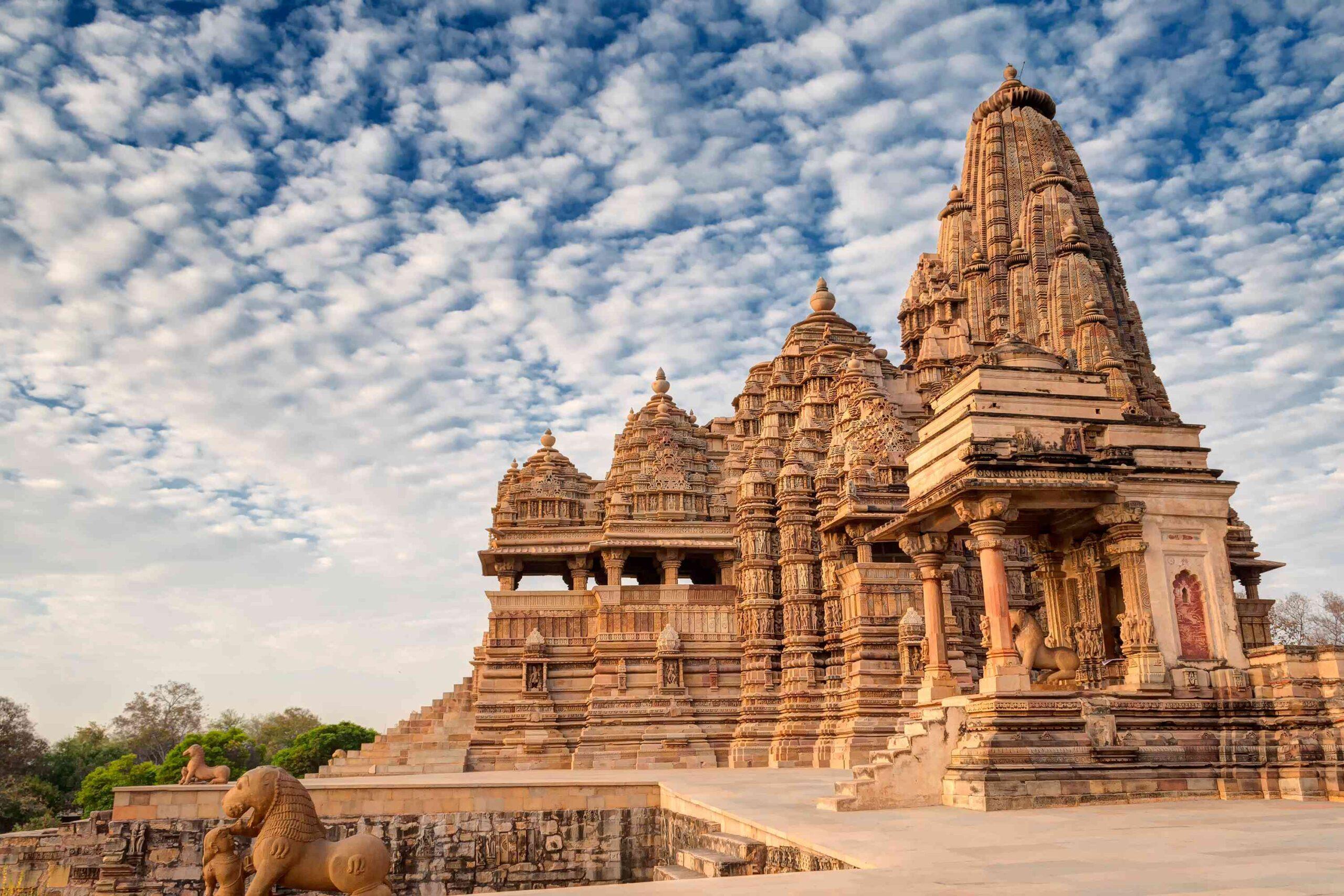
18th Temple: Golden Temple, Punjab
The Golden Temple, also known as Harimandir Sahib, which means “abode of God,” is a sacred place for Sikhs. This Gurdwara is situated in the Punjab city of Amritsar, India. Along with the Gurdwara Janam Asthan in Nankana Sahib and the Gurdwara Darbar Sahib Kartarpur in Kartarpur, it is one of the holiest places in Sikhism.

19th Temple: Sanchi Stupa
Sanchi is one of the holy places for Buddhist devotees, is a hilltop in Sanchi Town, Raisen District, Madhya Pradesh, and is well-known for its Great Stupa. A significant piece of Indian architecture and a UNESCO World Heritage Site, the Great Stupa at Sanchi. In the third century BCE, Ashoka the Great, the Mauryan monarch, ordered its construction. The basic hemispherical brick building that served as its foundation was placed over the Buddha’s relics.

20th Temple: Lingaraja Temple, Bhubaneswar
The Lingaraja temple is One of the oldest temples in Bhubaneswar, located in the capital of Odisha. The Shiva-dedicated Lingaraja Temple epitomises Kalinga style and brings to a close the mediaeval phases of Bhubaneswar’s architectural legacy.
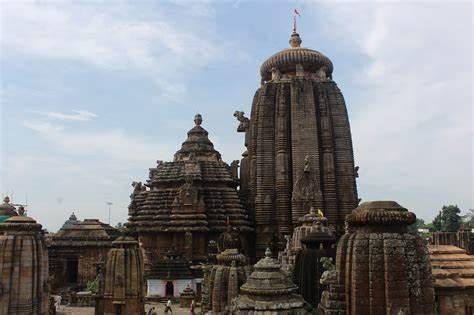
21st Temple: Sai Baba Temple, Shirdi
Located at a distance of 122 Km from Nasik in the Ahmednagar district of Maharashtra, Shirdi is the home of Sai Baba..
Richest Temple in India
Richest Temples in India. Tirumala Tirupati Venkateshwara Temple, located in Tirupati, Andhra Pradesh, is the richest temple in India.
Famours Temple In India- Ram Mandir, Ayodhya
Ram Mandir, also known as the Ram Temple, is a one of the most famous and Holy Hindu temple located in Ayodhya, Uttar Pradesh, India. After completion, the temple complex became the world’s third largest Hindu temple. Hindus believe the spot is the birthplace of the Hindu god Rama. The Prime Minister of India, Narendra Modi, performed a ceremony regarding the opening of the temple on January 2024
The Ram Mandir is created in the Māru-Gurjara architecture of Nagara style, a form of Hindu temple architecture commonly seen in northern India. The temple’s main construction is three stories tall and erected on a raised platform. It contains five mandapas in the centre of the garbhagriha (sanctum sanctorum) and along the entrance route.
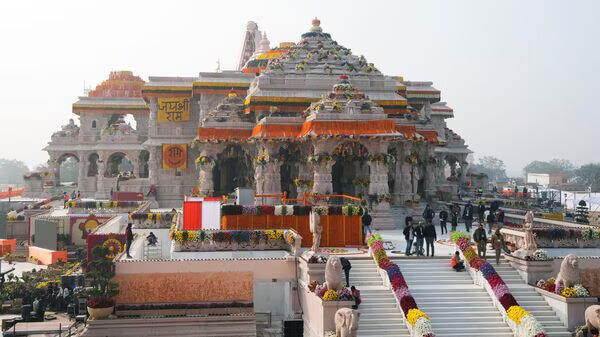
The temple’s main construction is three stories tall and erected on a raised platform. It contains five mandapas in the centre of the garbhagriha (sanctum sanctorum) and along the entrance route. Kudu, Nritya, and Rang are the three mandapas on one side, while Kirtan and Prarthana are the two on the other. Shikharas are used to embellish Nagara mandapas.
The temple contains a total of 366 columns. Each column contains 16 idols, which comprise Shiva’s incarnations, the 10 Dashavataras, the Chausath Yoginis, and the 12 avatars of the goddess Saraswati. According to literature on temple design for Vishnu, the sanctum sanctorum is octagonal in shape.
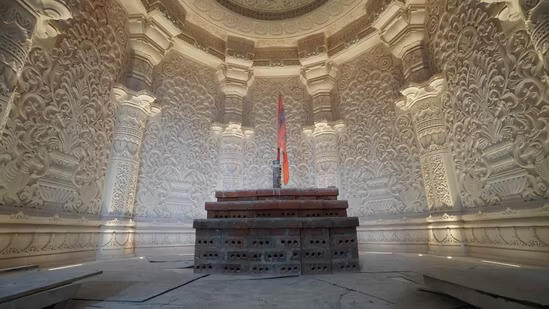
Ram Lalla Virajman, Rama’s newborn form and a Vishnu avatar, is the temple’s presiding deity. Arun Yogiraj, a sculptor from Mysore, Karnataka, who is well-known for his statues throughout India, produced the idol of Rama. Bhagwat Prasad and Shankar Lal, a fourth-generation tailor to Rama’s idol, created Ram Lalla’s outfit.Two Ram Lalla idols (one of which is five years old) are consecrated in the temple’s sanctum.
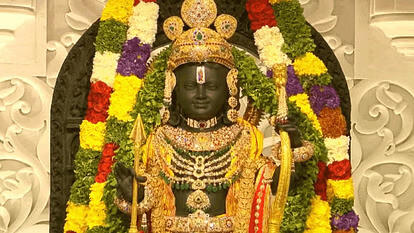
World’s largest Hindu Temple- World biggest Temple in India
The world’s largest Hindu temple is the Akshardham Temple in Delhi, India. The Akshardham Temple, officially known as the Swaminarayan Akshardham Temple, was inaugurated in 2005 and is dedicated to Bhagwan Swaminarayan and his teachings.
Please note that new developments may have occurred since my last update, and there could be larger Hindu temples built in other parts of the world. I recommend checking the latest information to ensure accuracy.
Related Post:
- Freedom Fighters Of India Names List
- Unity In Diversity In India: Essay, Meaning, Drawing, Poster, Quotes, Slogans
- Computer Shortcut Keys: A To Z List, Chart

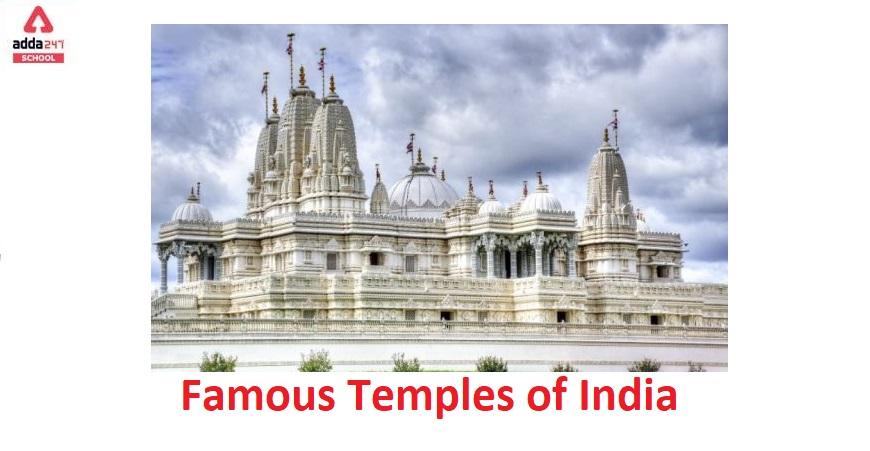

 Bihar Board 12th Result 2025 Out @ inter...
Bihar Board 12th Result 2025 Out @ inter...
 [Live Update] NTA CUET PG Answer Key 202...
[Live Update] NTA CUET PG Answer Key 202...
 UPMSP Result 2025, यूपी बो�...
UPMSP Result 2025, यूपी बो�...










